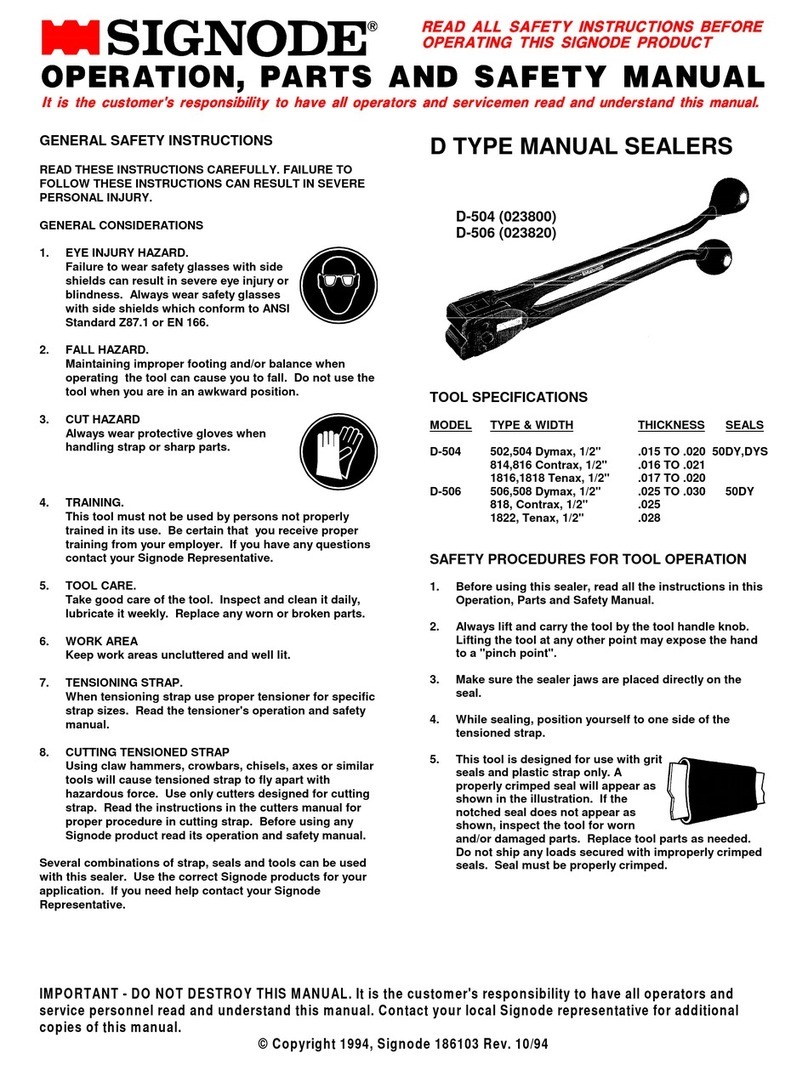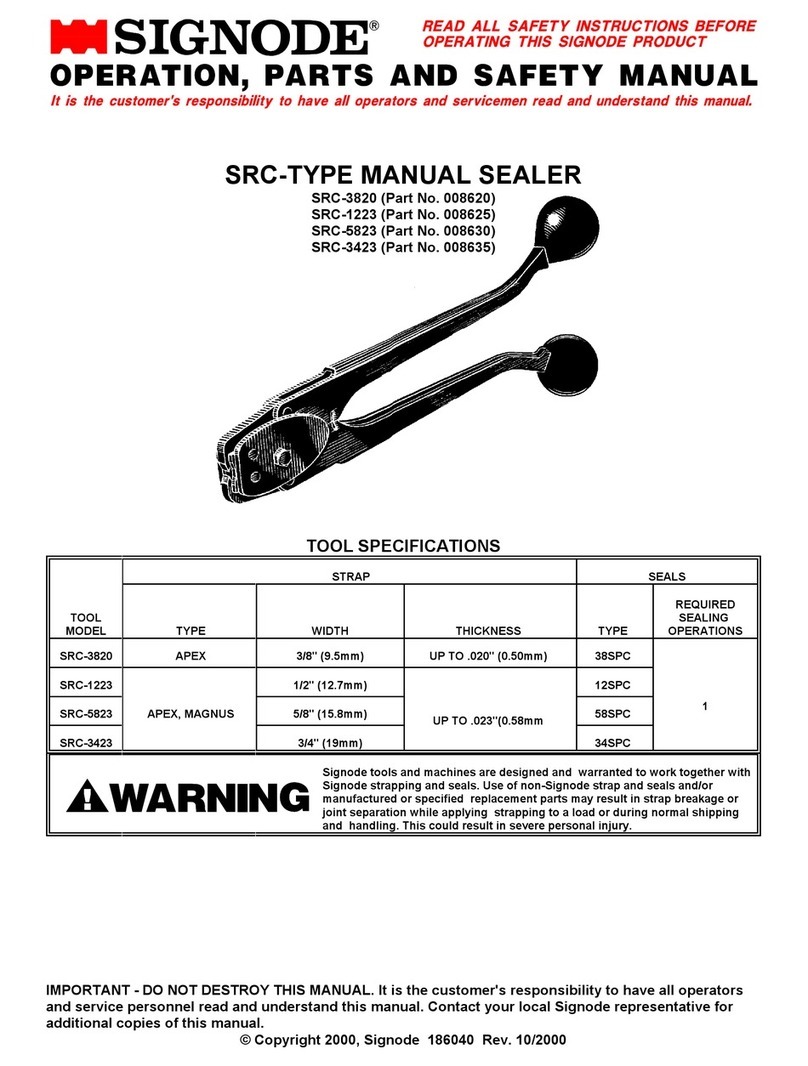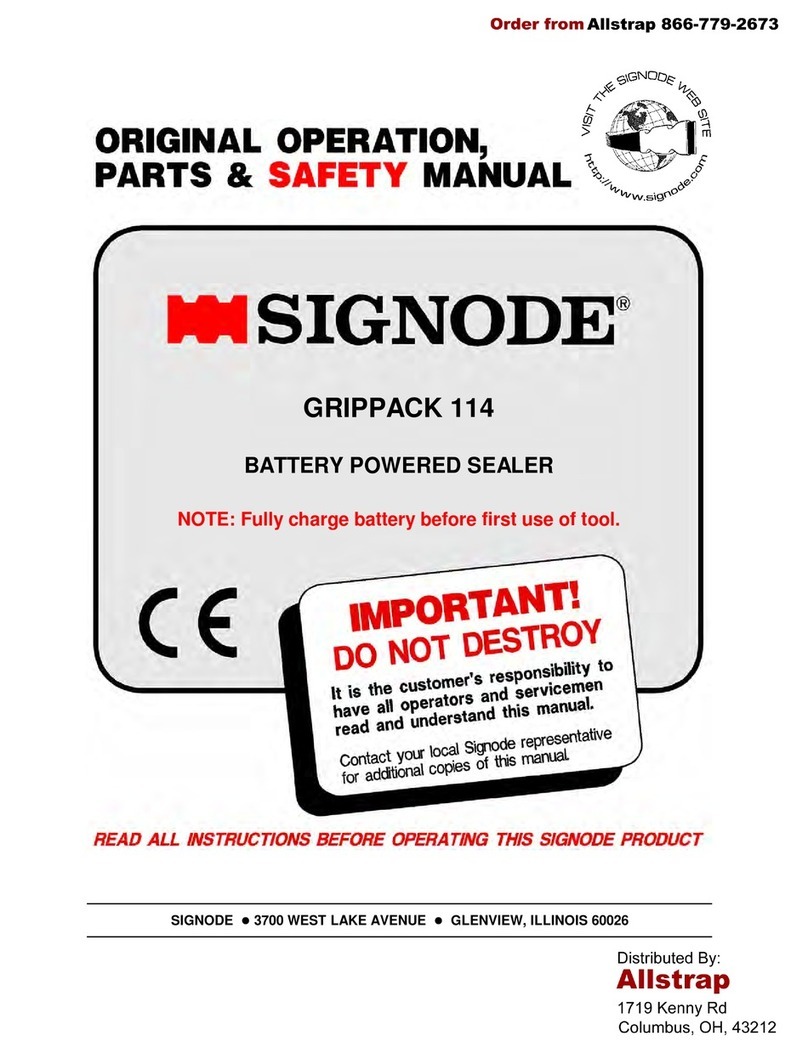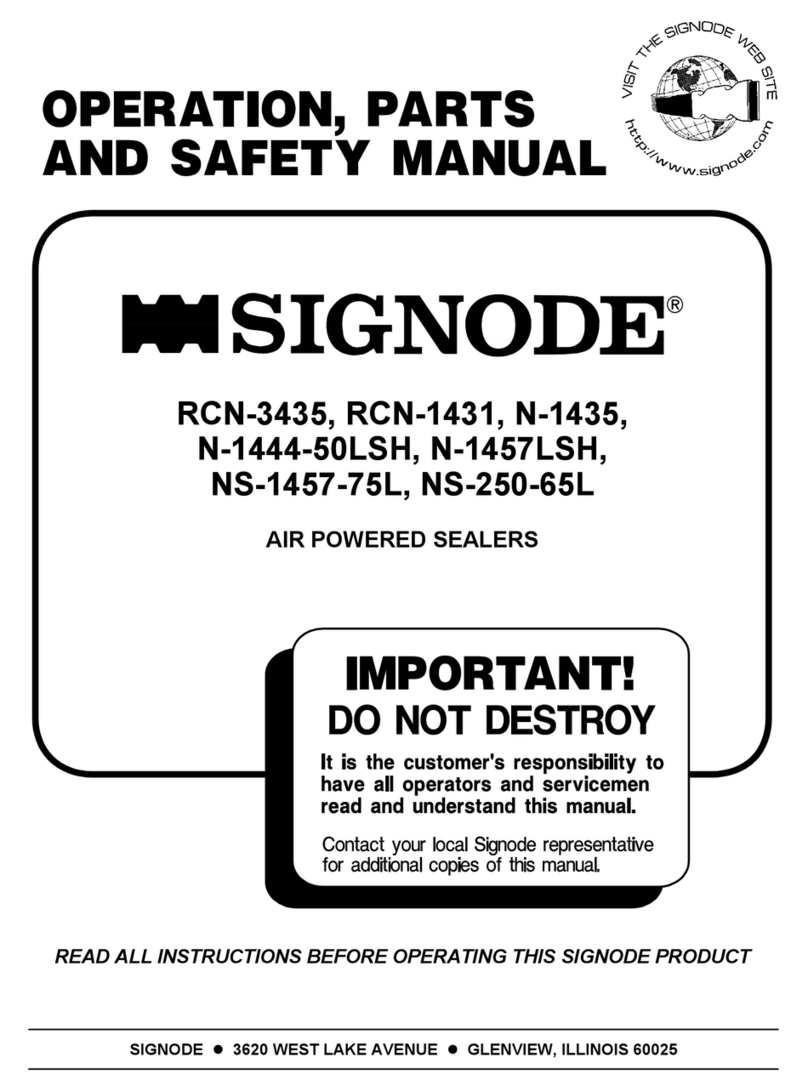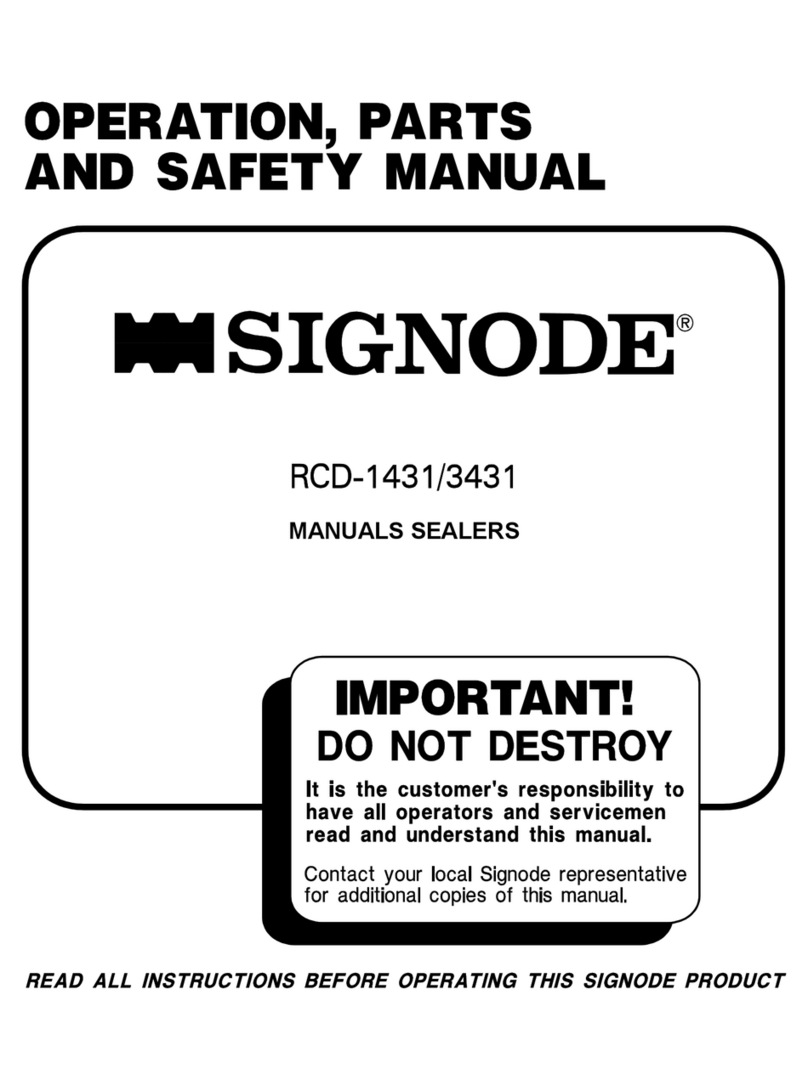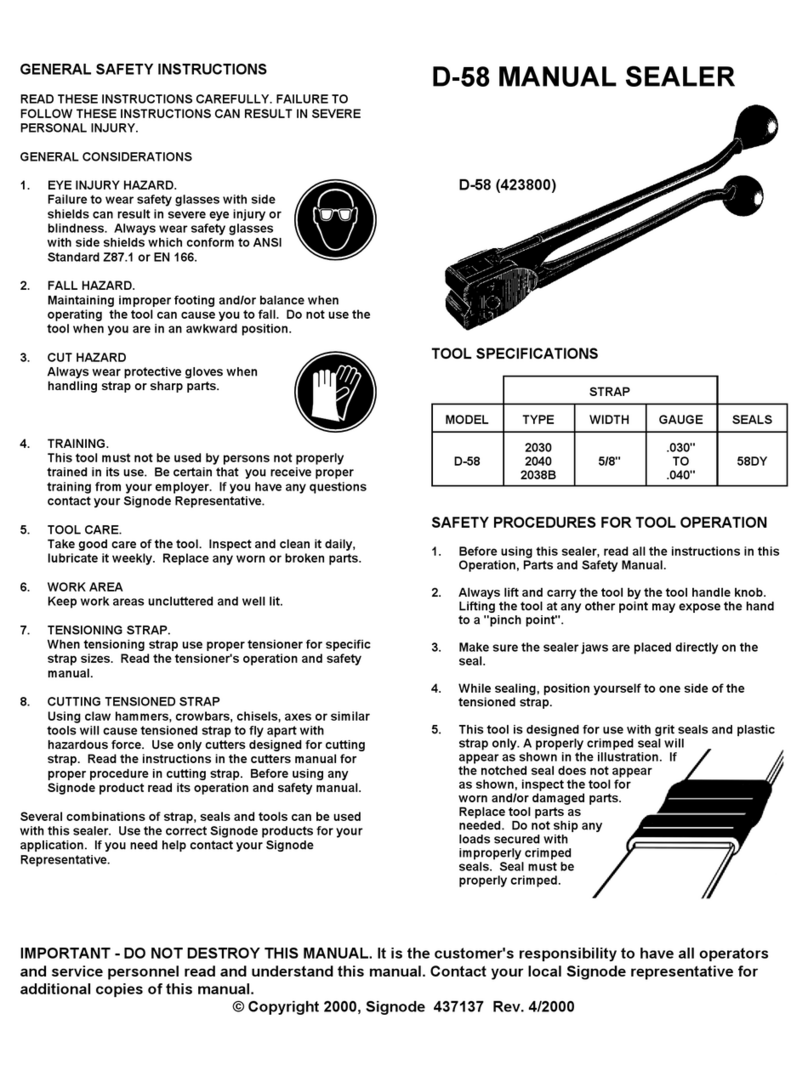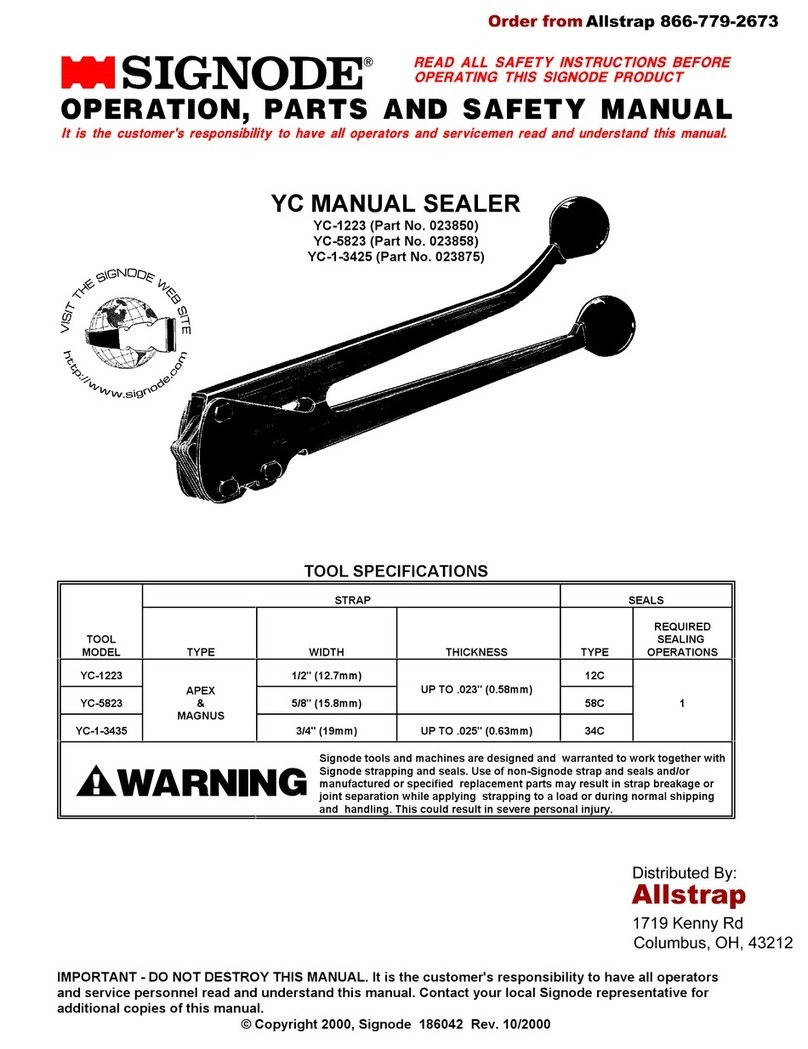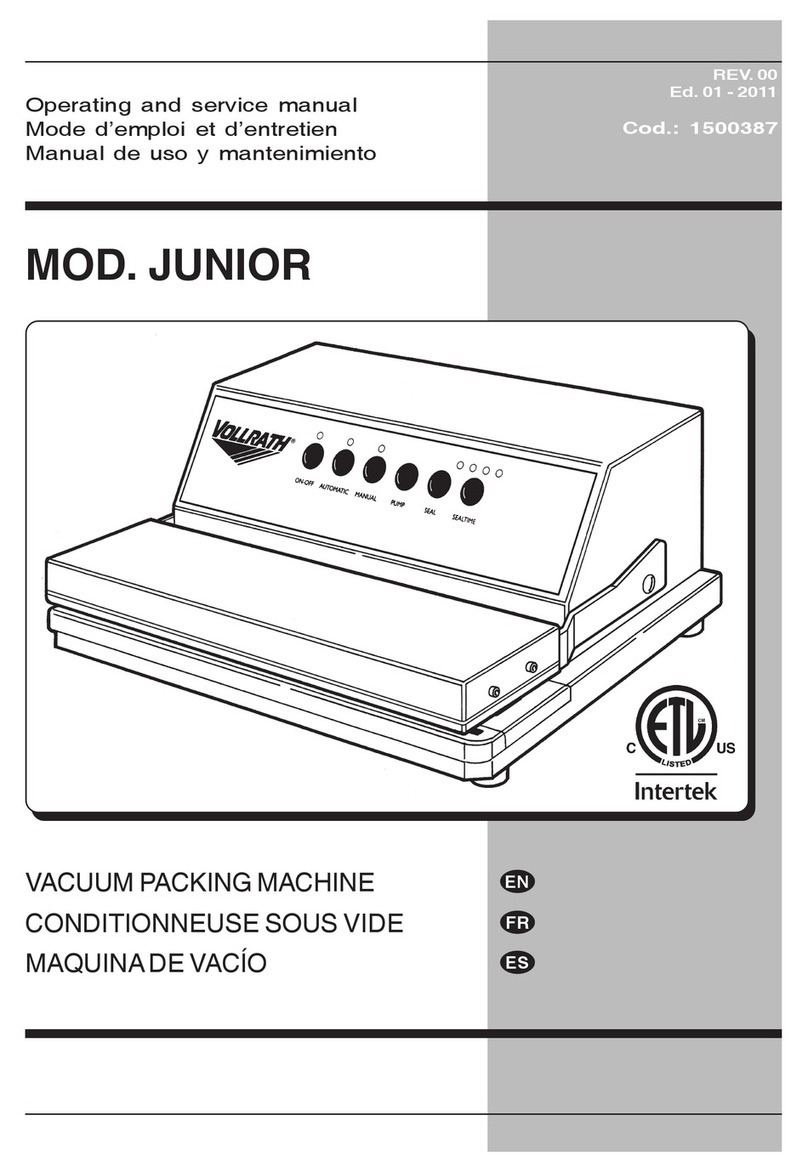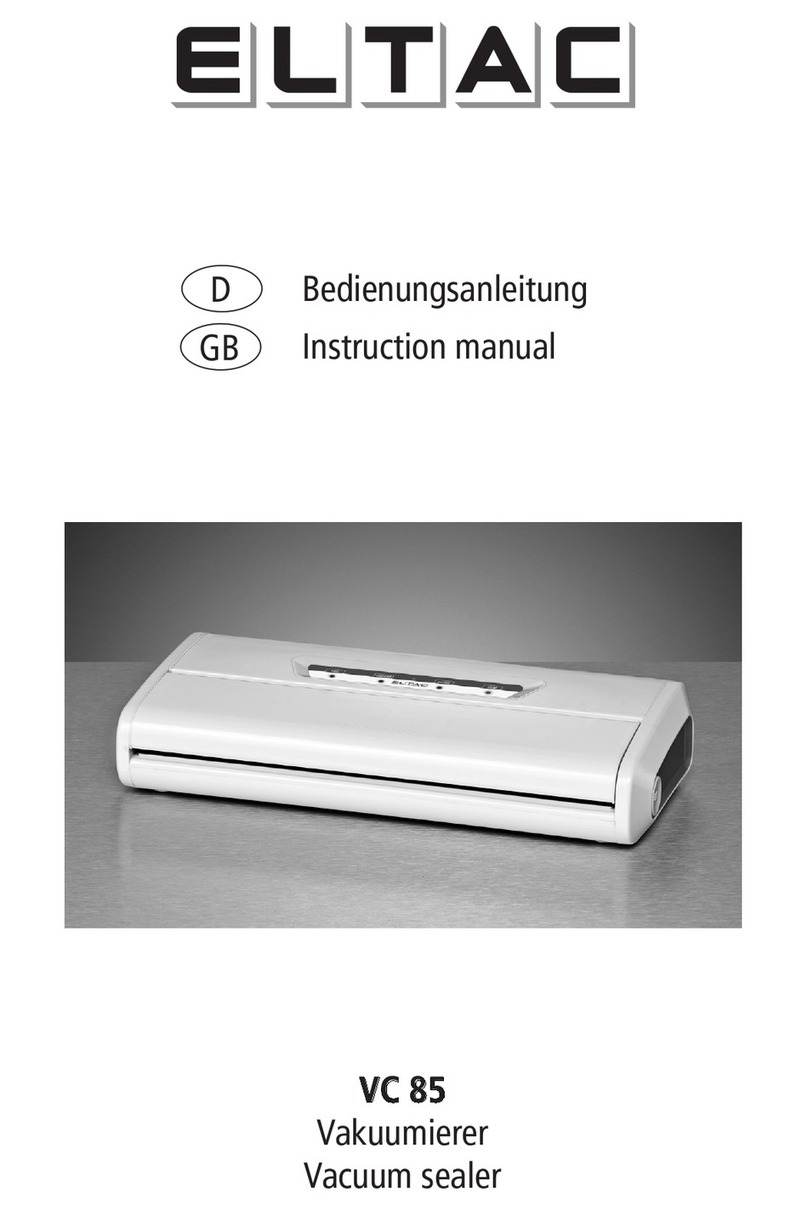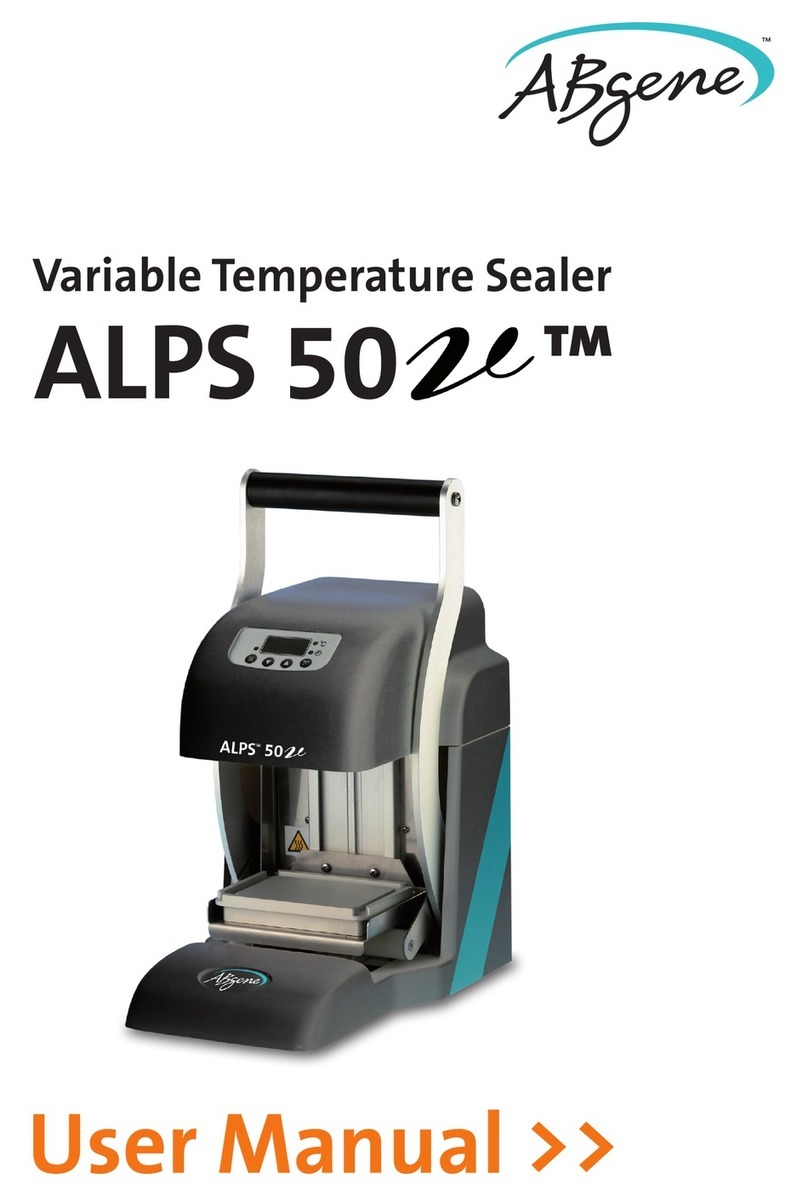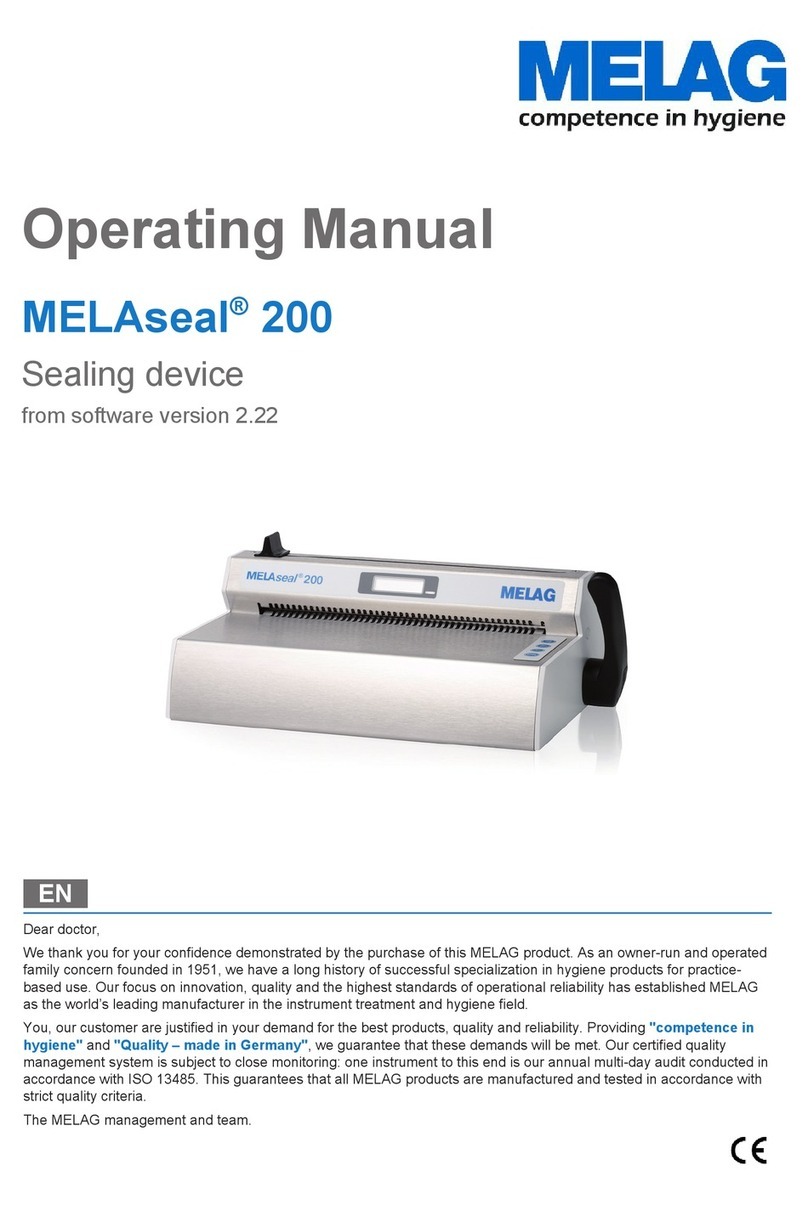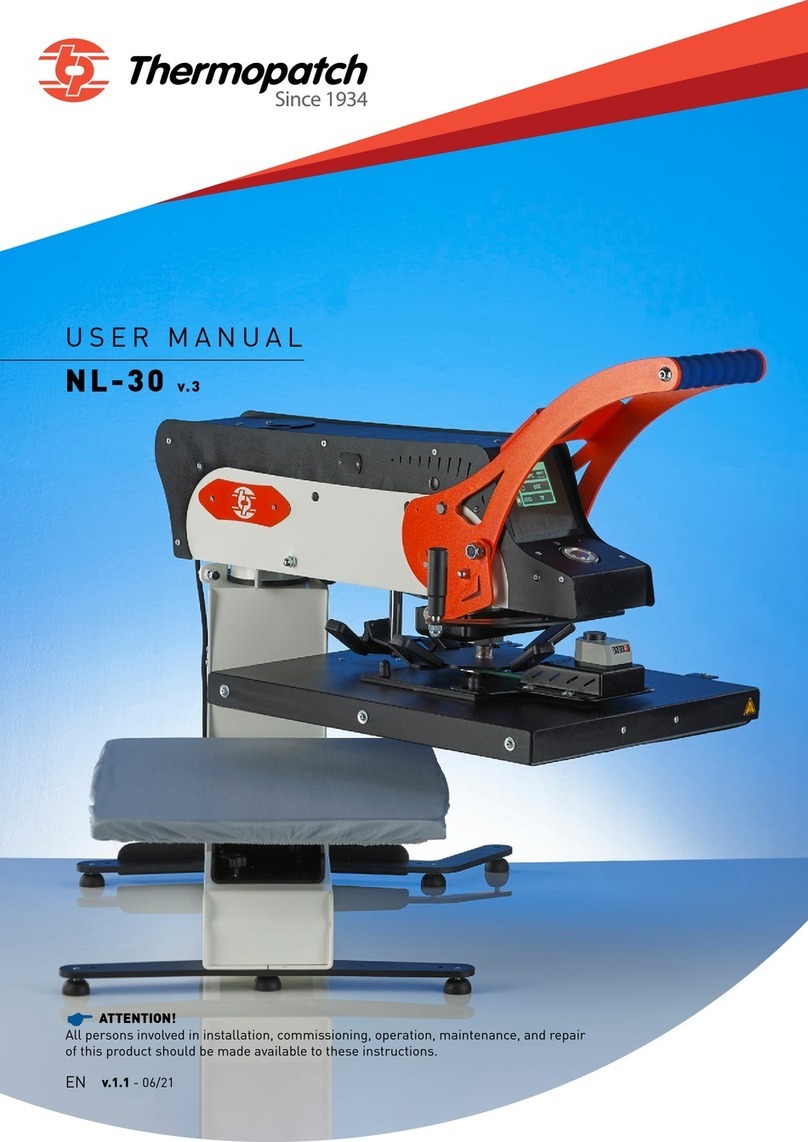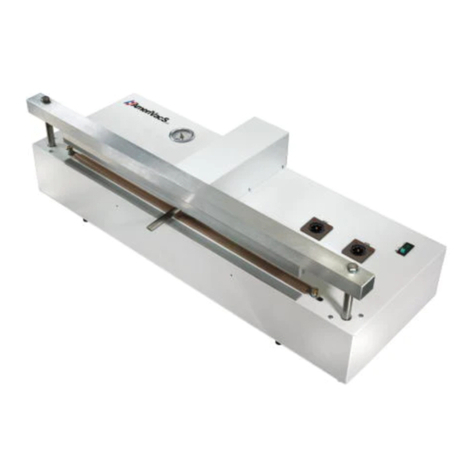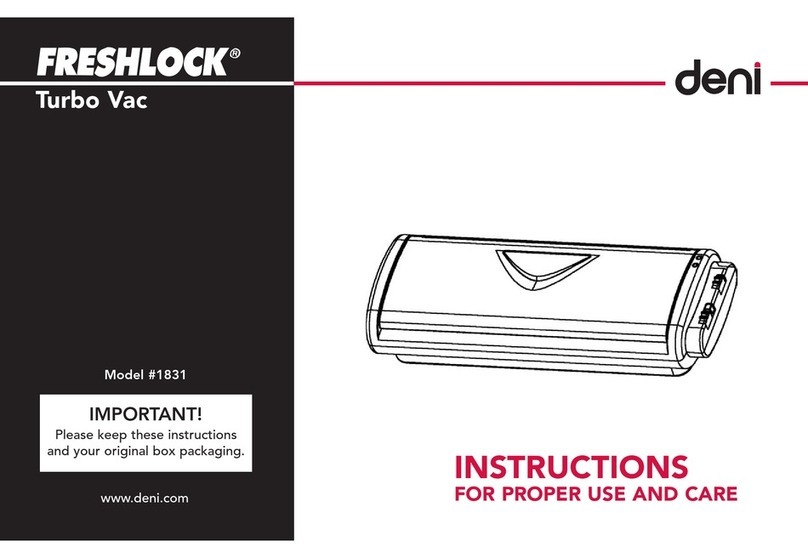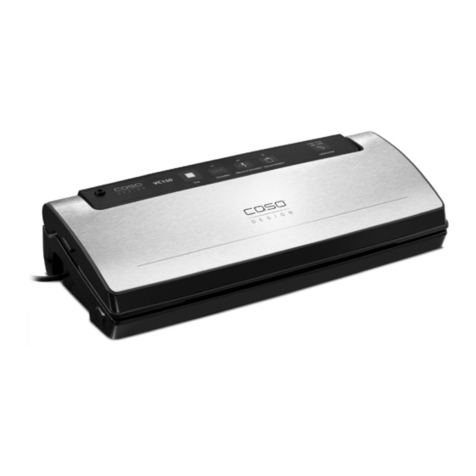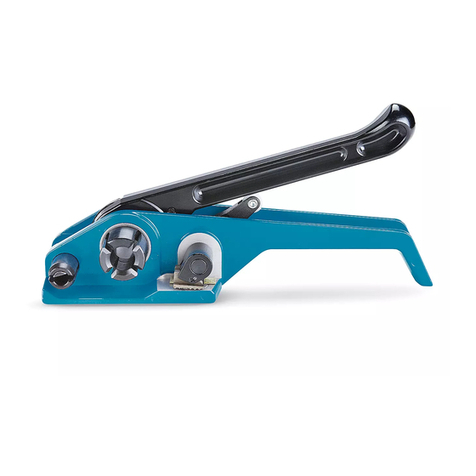
Page | 3
When operating a semi-automatic machine, hold box flaps down at the trailing edge of the
box. Release hands as soon as the belts take the box.
Do not wear jewelry, loose clothing, such as ties, scarves, etc., and long hair should be pulled
back when operating the machine.
Safety glasses should be worn when working with or around machine.
Safety Devices Functional Testing
It is necessary to test the functionality of the safety devices at regular time intervals. The safety
emergency stop function must be tested daily before each and every shift of operation. The
procedure for testing the emergency stop function is as follows:
1. Connect the machine to the main electrical power source.
2. De-press the emergency stop pushbutton on the main electrical enclosure.
3. Press the start pushbutton on the main enclosure. If the machine does not start proceed to
the next step. If the machine does start unplug it from the main electrical power source and
report it to your supervisor. This machine cannot be used until a qualified technician
corrects the issue.
4. Reset the estop pushbutton to its extended state. Push the start pushbutton the machine
should start. With the machine running de-press the emergency stop pushbutton, the
machine should now stop. This confirms that the emergency stop function is working
correctly.
5. Test guard door interlock switches by starting the machine with all of the guard doors
closed. If the machine starts then open each of the guard doors one at a time. Each time a
guard door is opened the machine must stop. Test each guard switch with the machine
running. If the machine does not stop or reset, the machine cannot be used until a qualified
technician corrects the issue.
6. This confirms that the emergency stop function is working correctly.
The overload motor relay must be tested every three months to confirm its operation. This test
can only be performed by a qualify technician since it requires the enclosure door to be opened.
1. Connect the machine to the main electrical power source.
2. Insure that the emergency stop pushbutton is fully extended.
3. De-press the machine start pushbutton. The machine drive motor should start at this time.
4. Open the main electrical enclosure. Use extreme caution not to contact any live conductors.
5. Locate the overload relay and de-press the red test button on the front of the unit. The
machine should stop. If the machine does not stop the overloads relay is defective and needs
to be changed out. If the machine stops the overload relay passes the functionality test.
6. Close the main enclosure door and lock using the turn latch.
Never operate a machine that does not pass the safety functional testing! Report it to
management and have the machine taken out of service until the deficiency is corrected.

